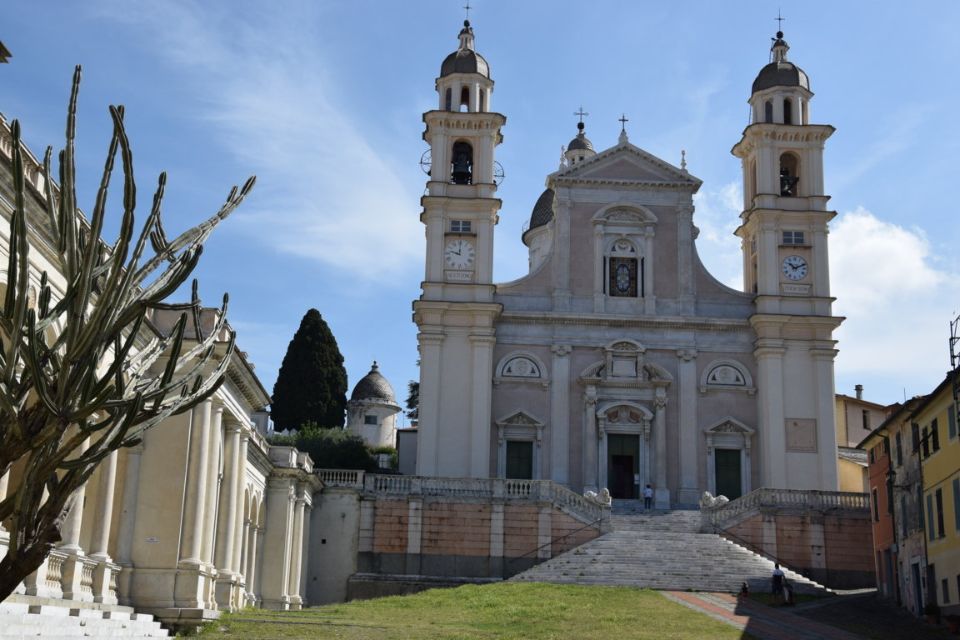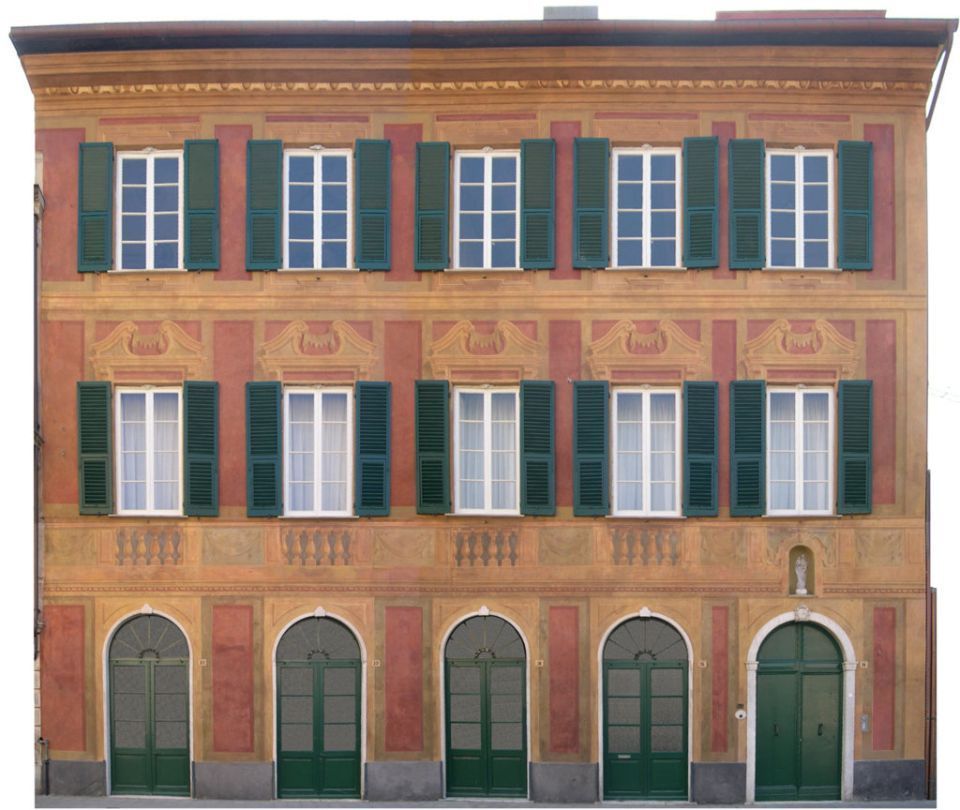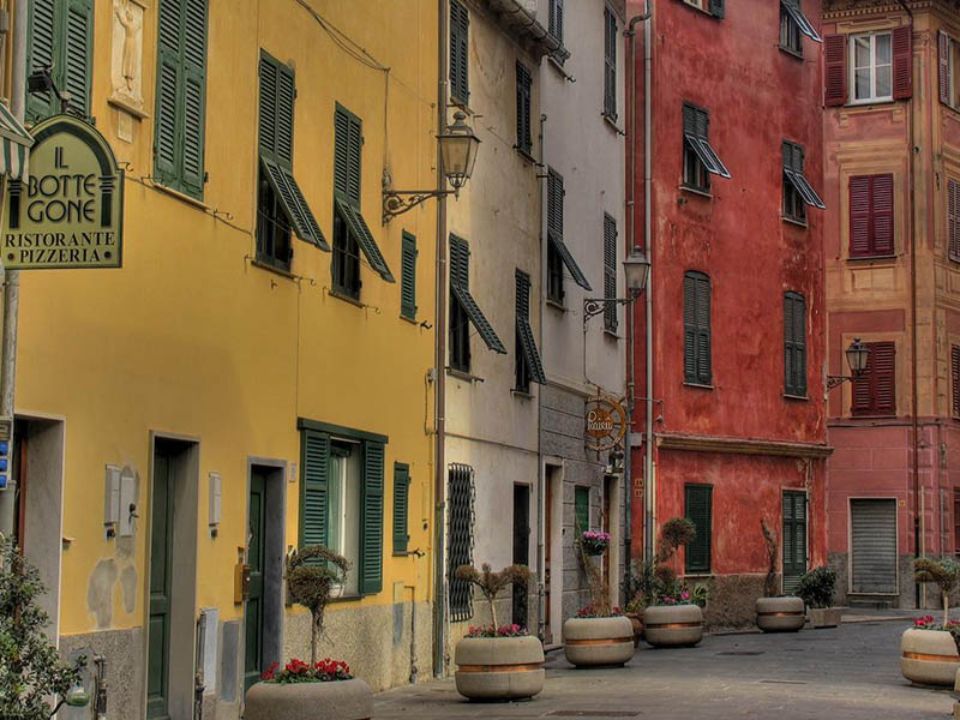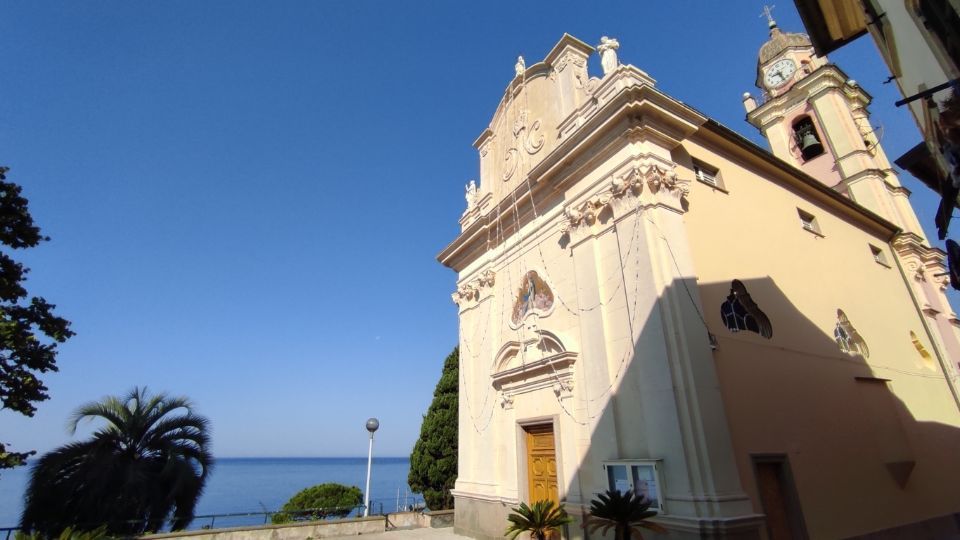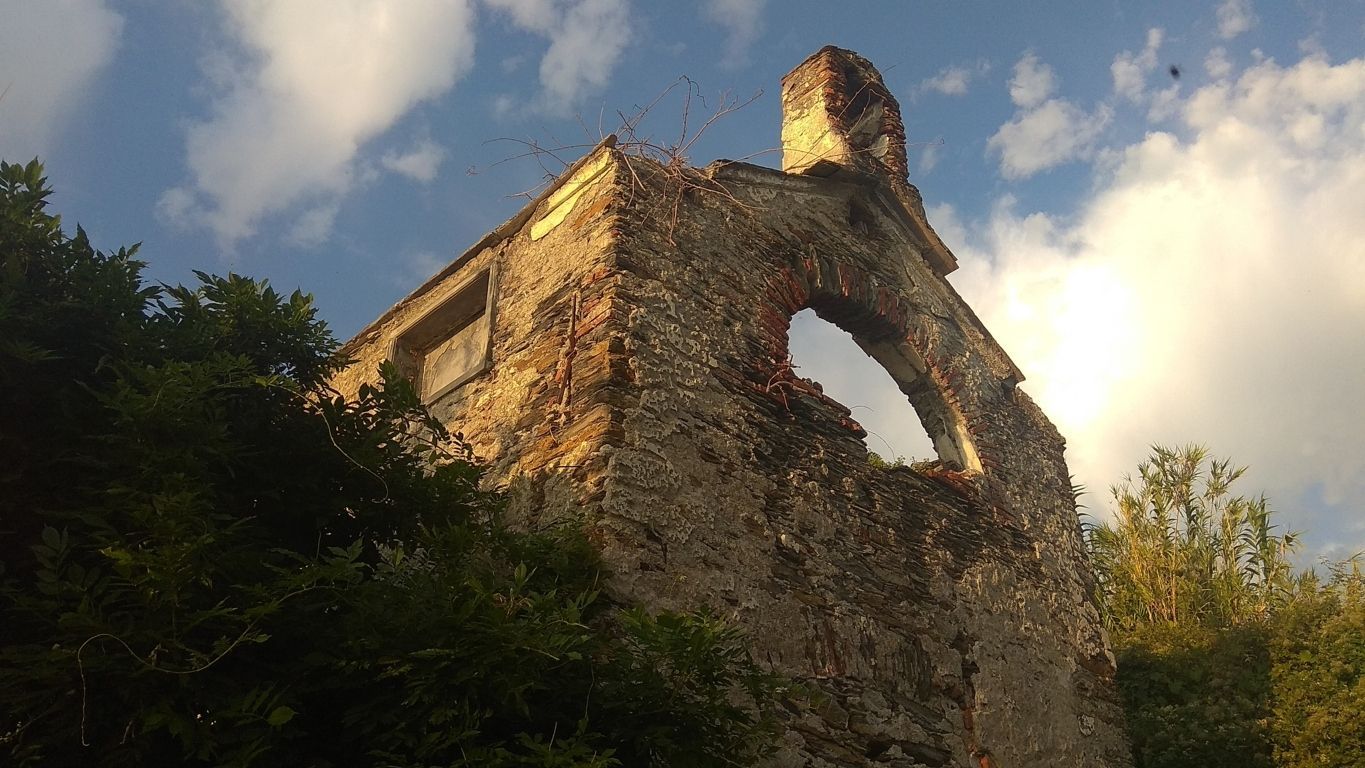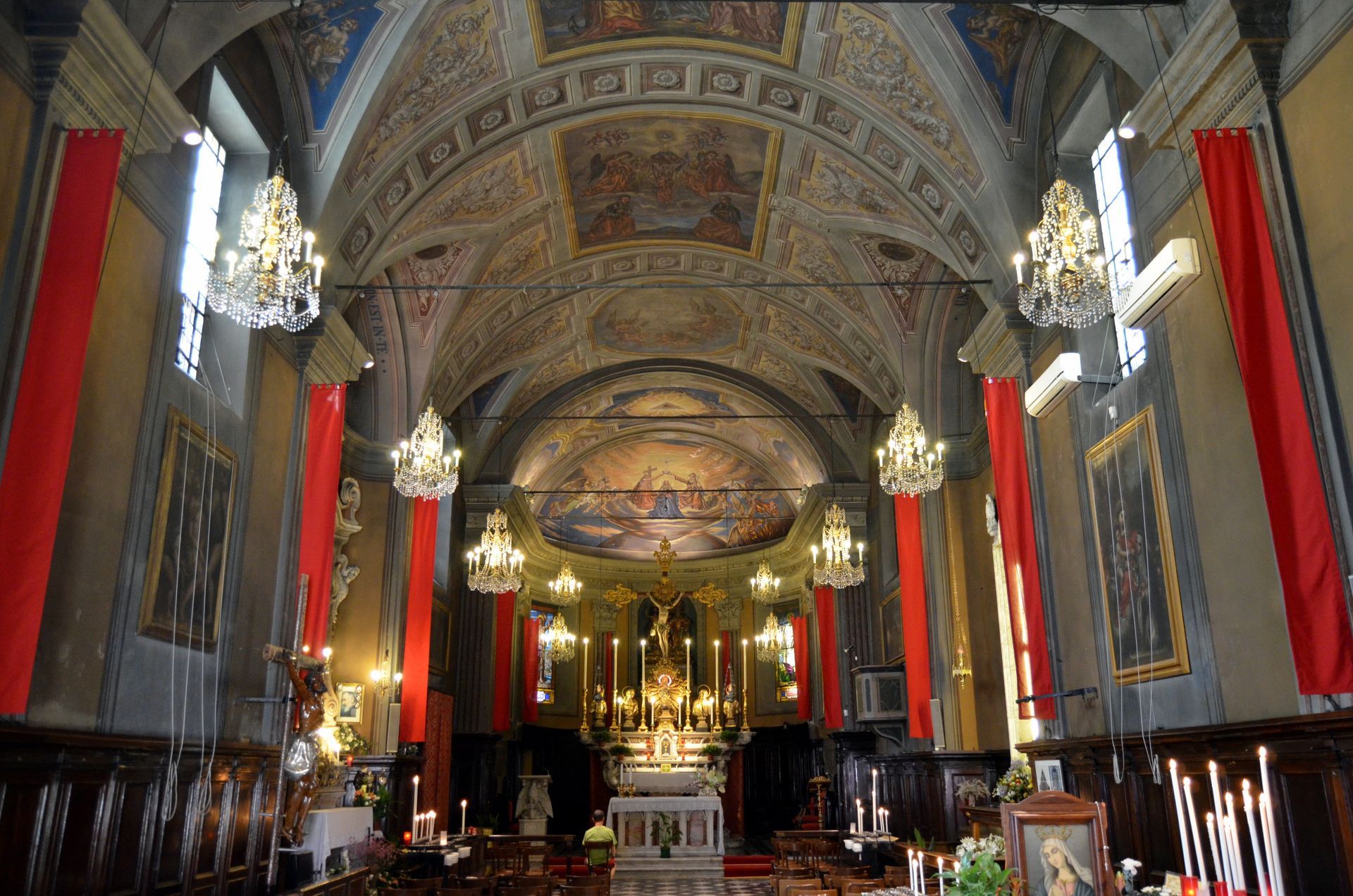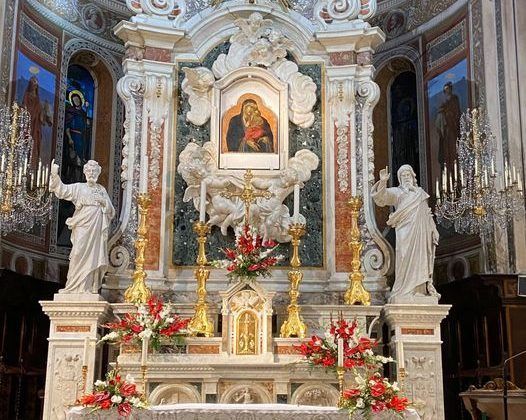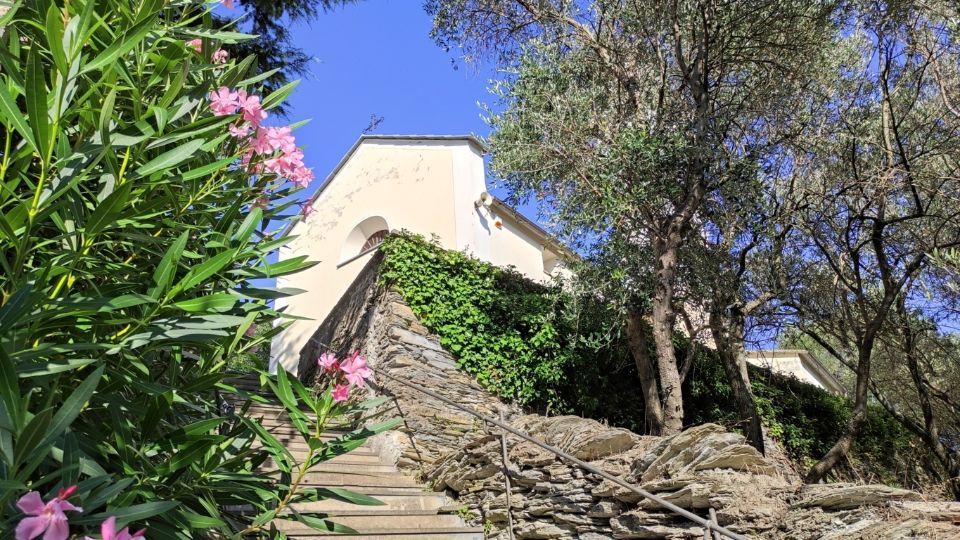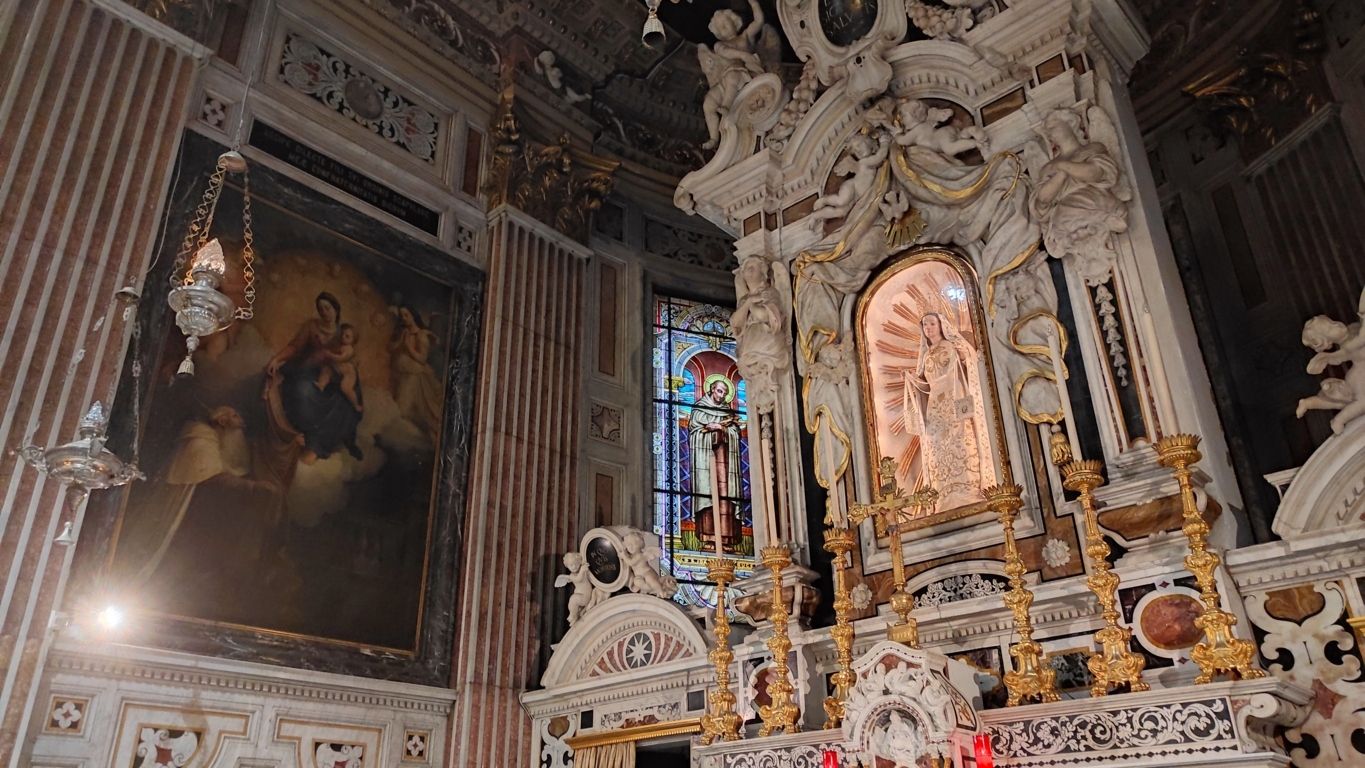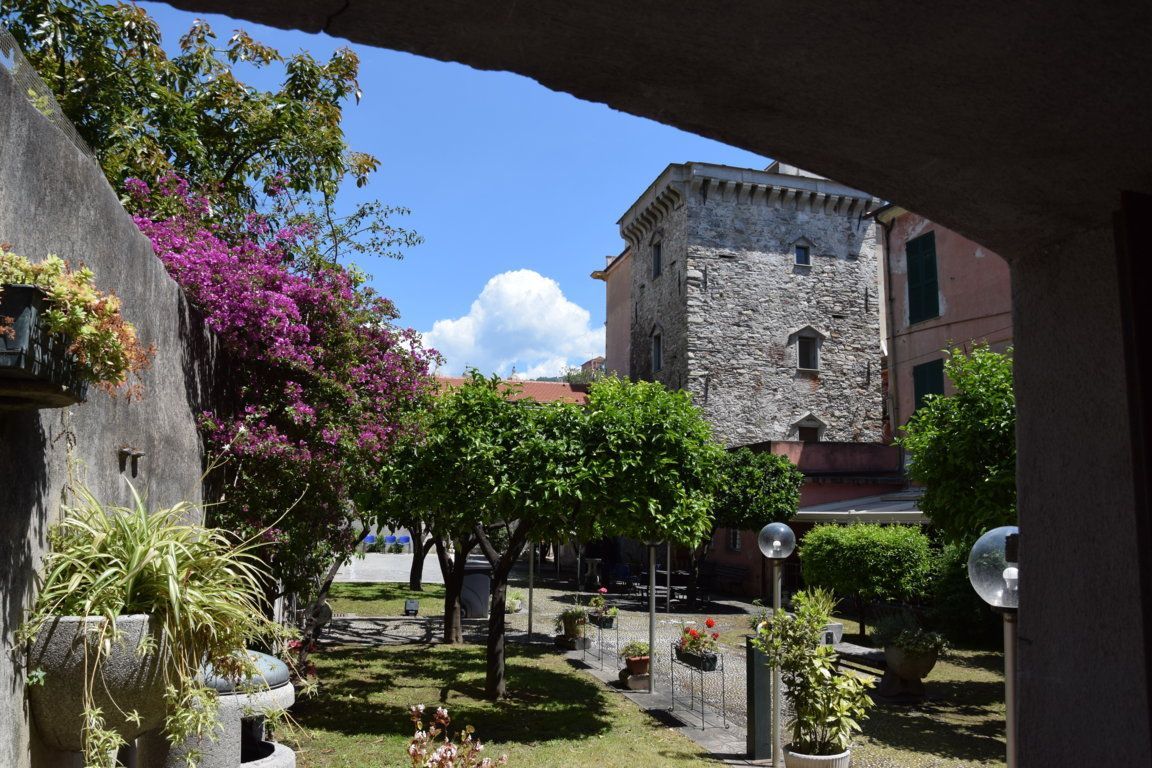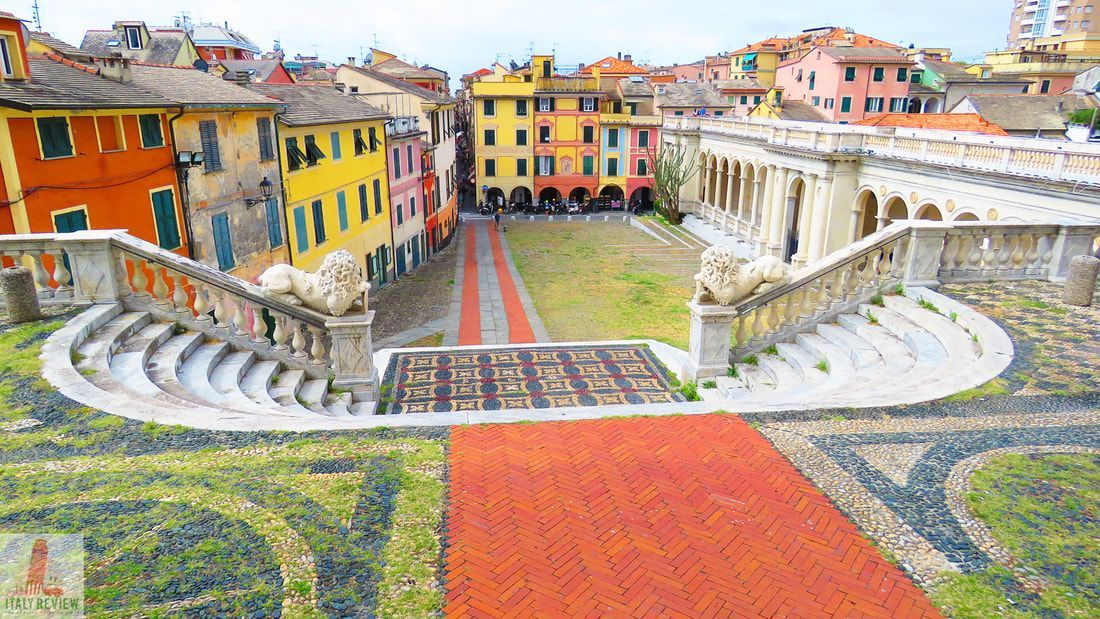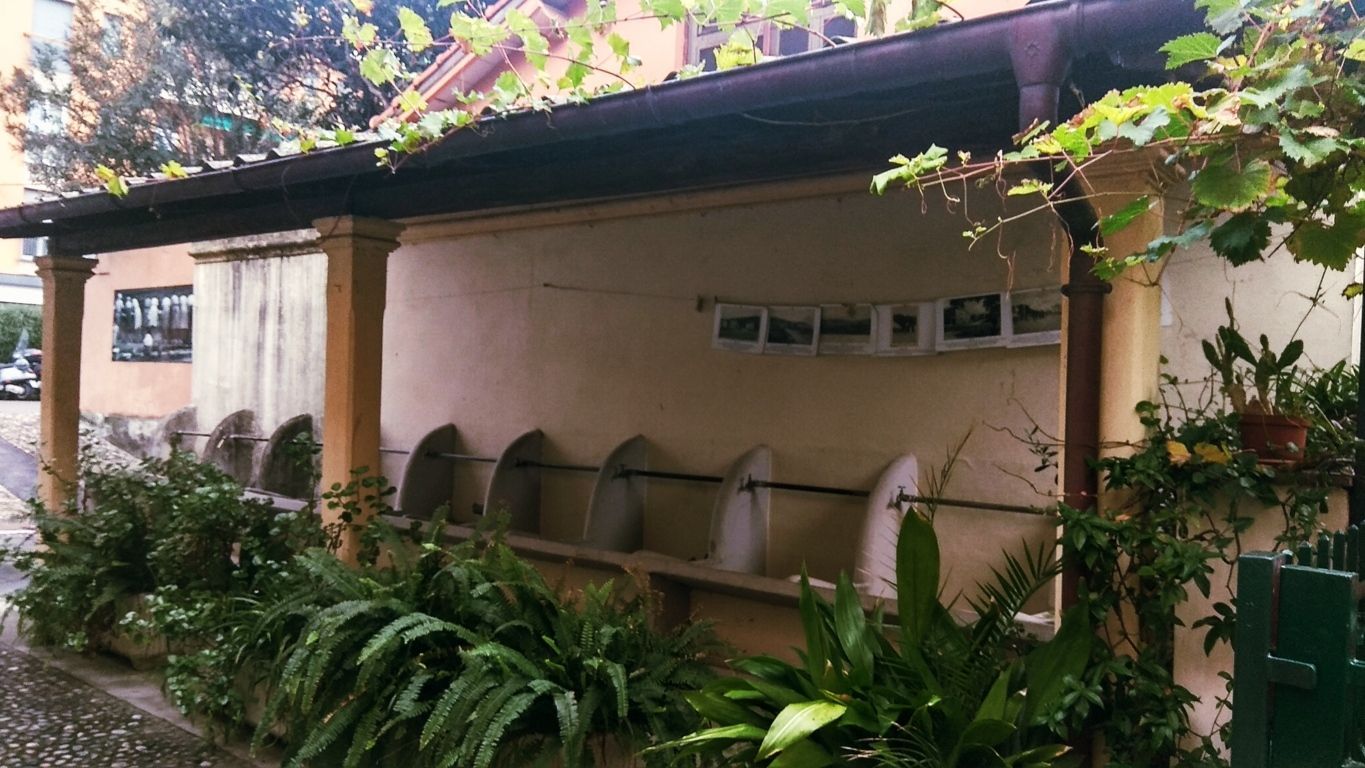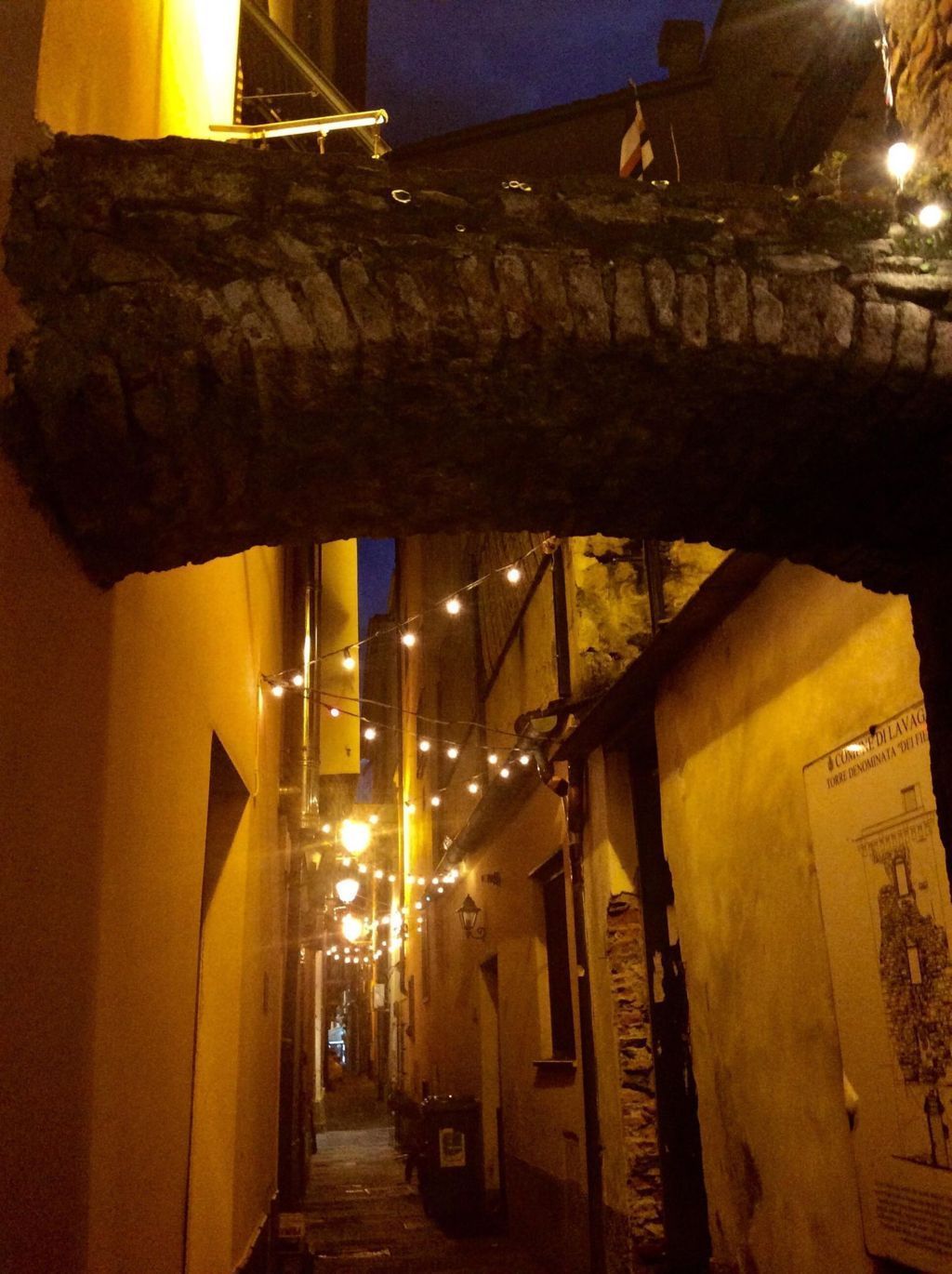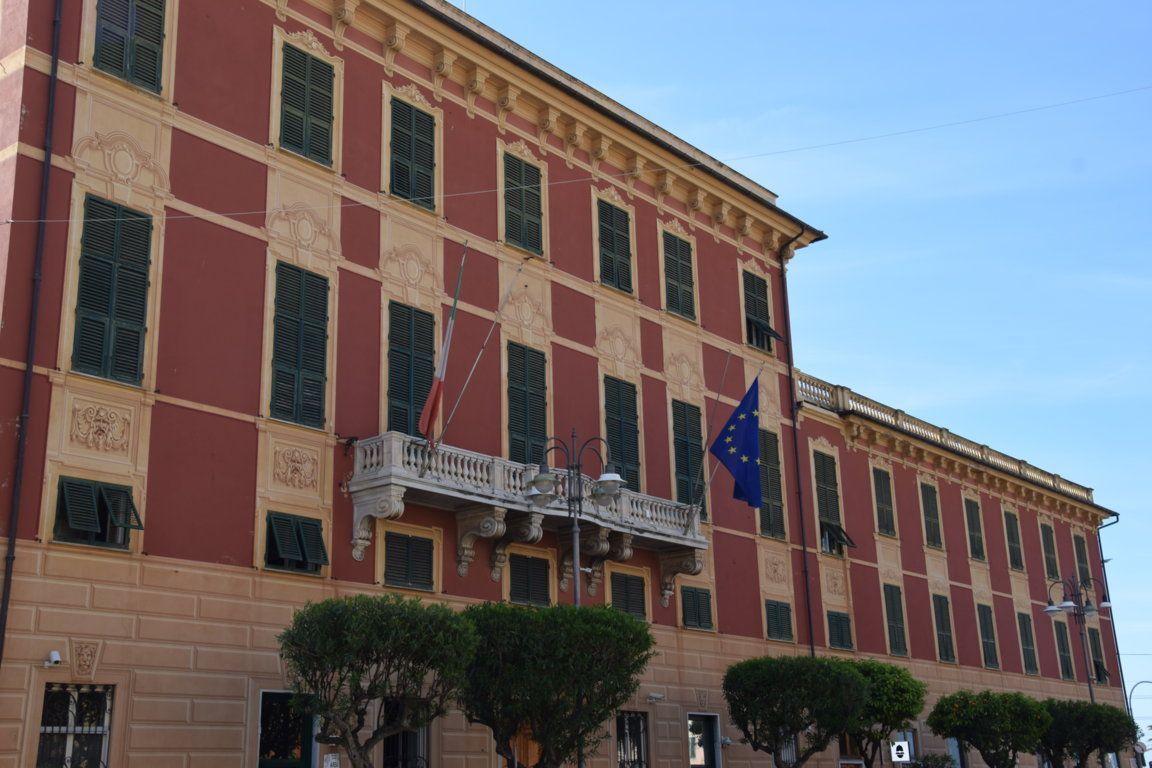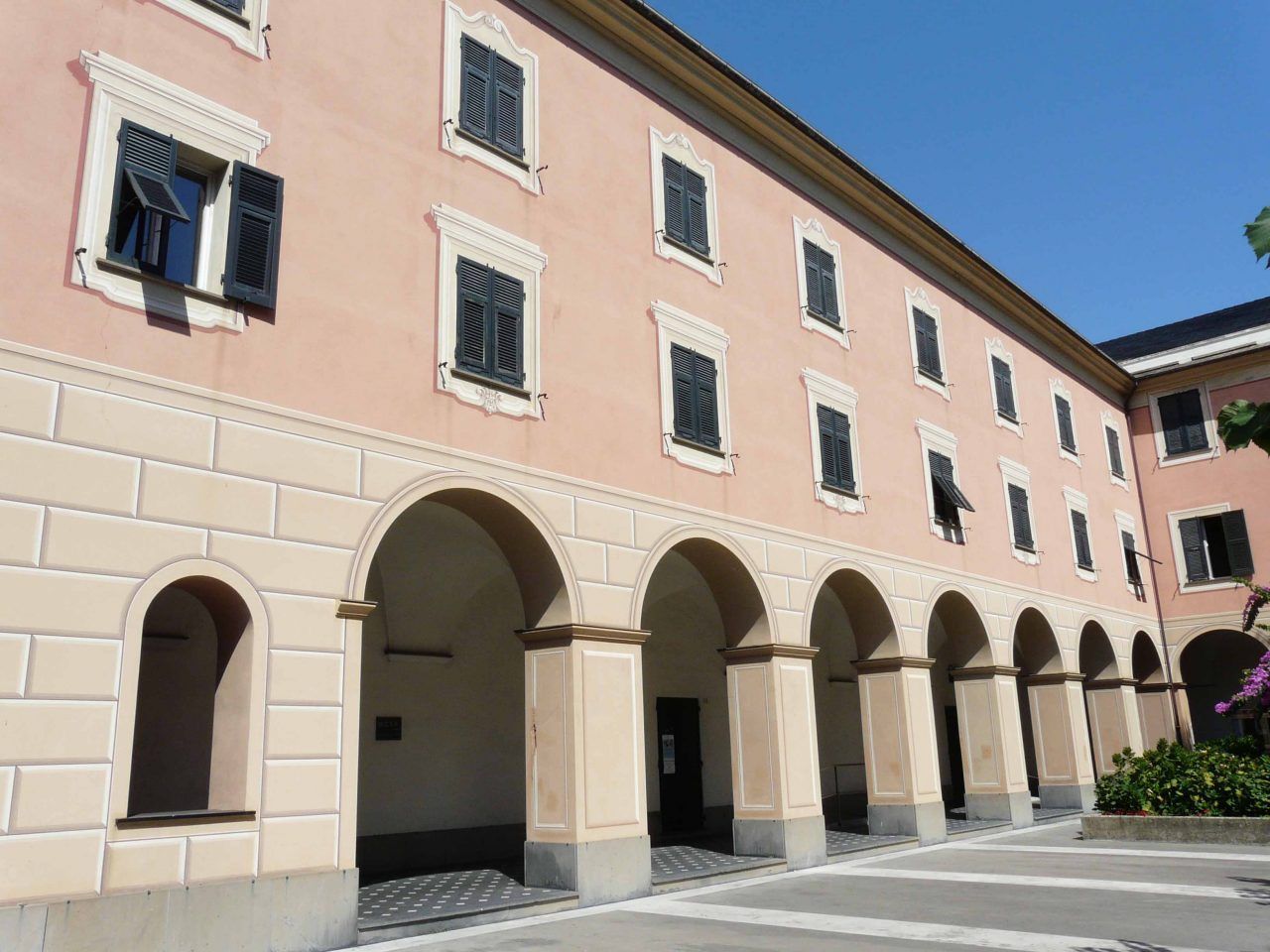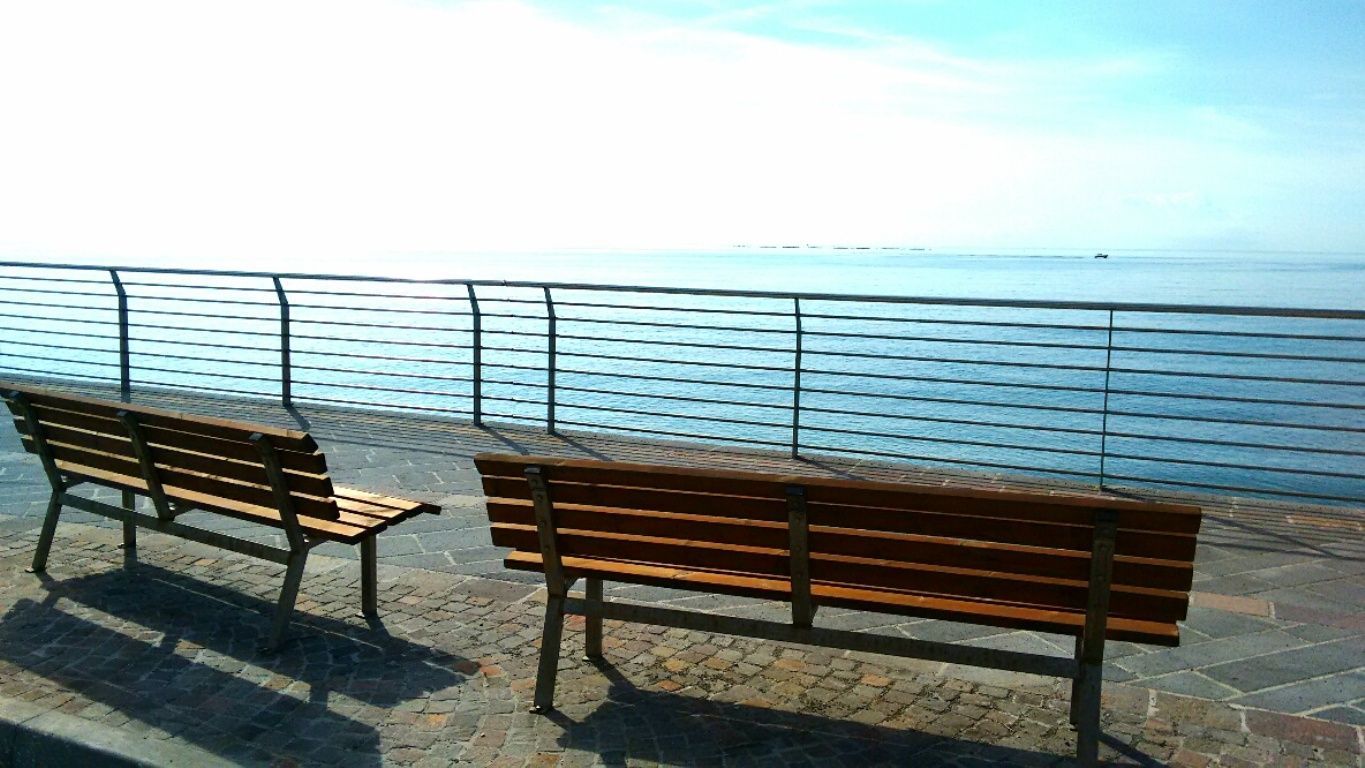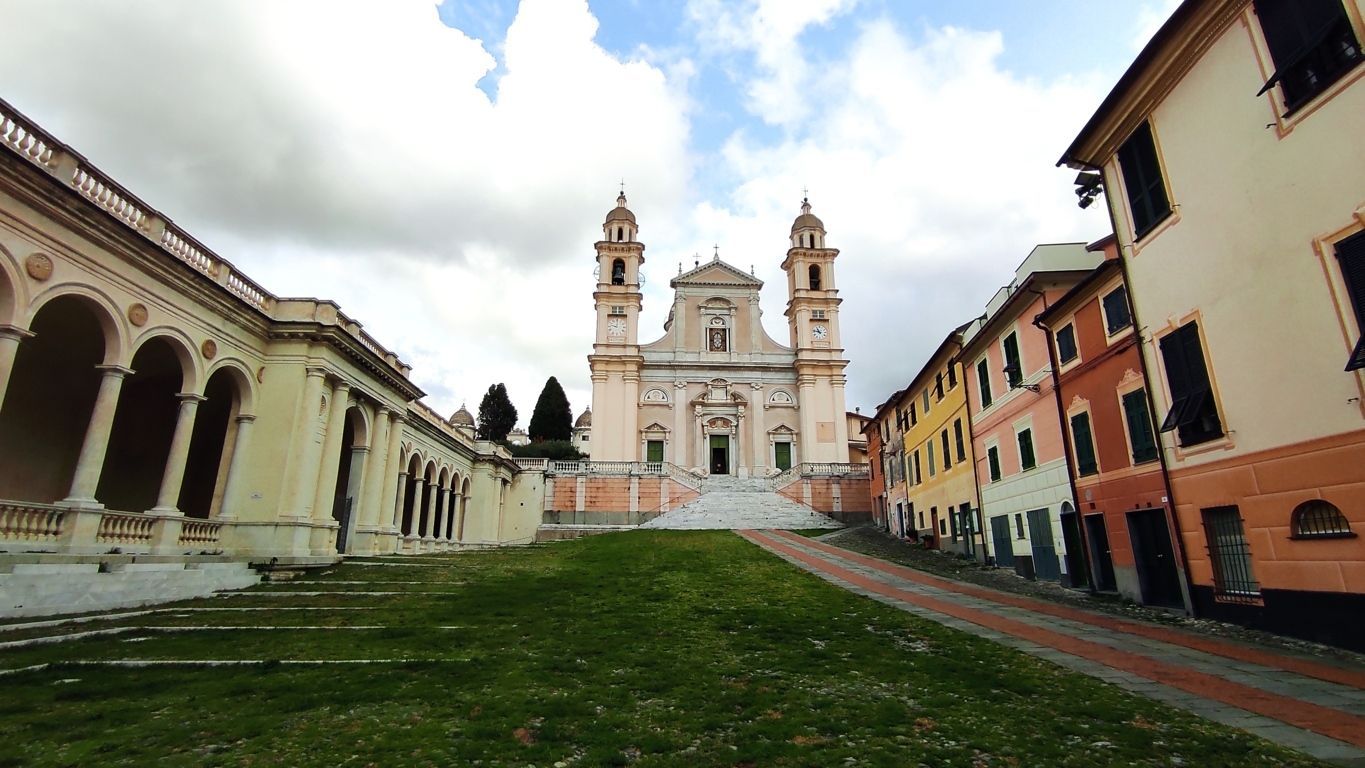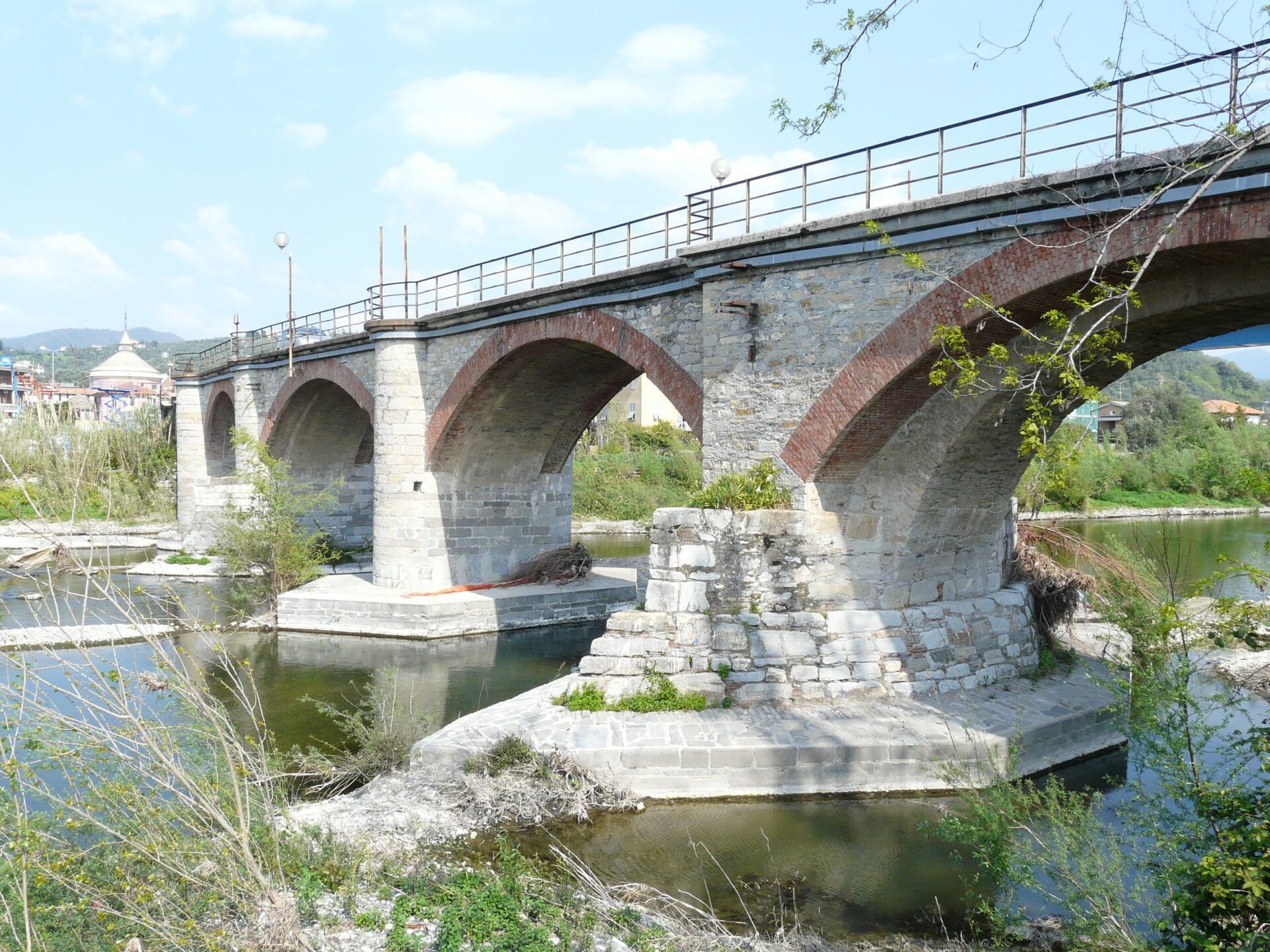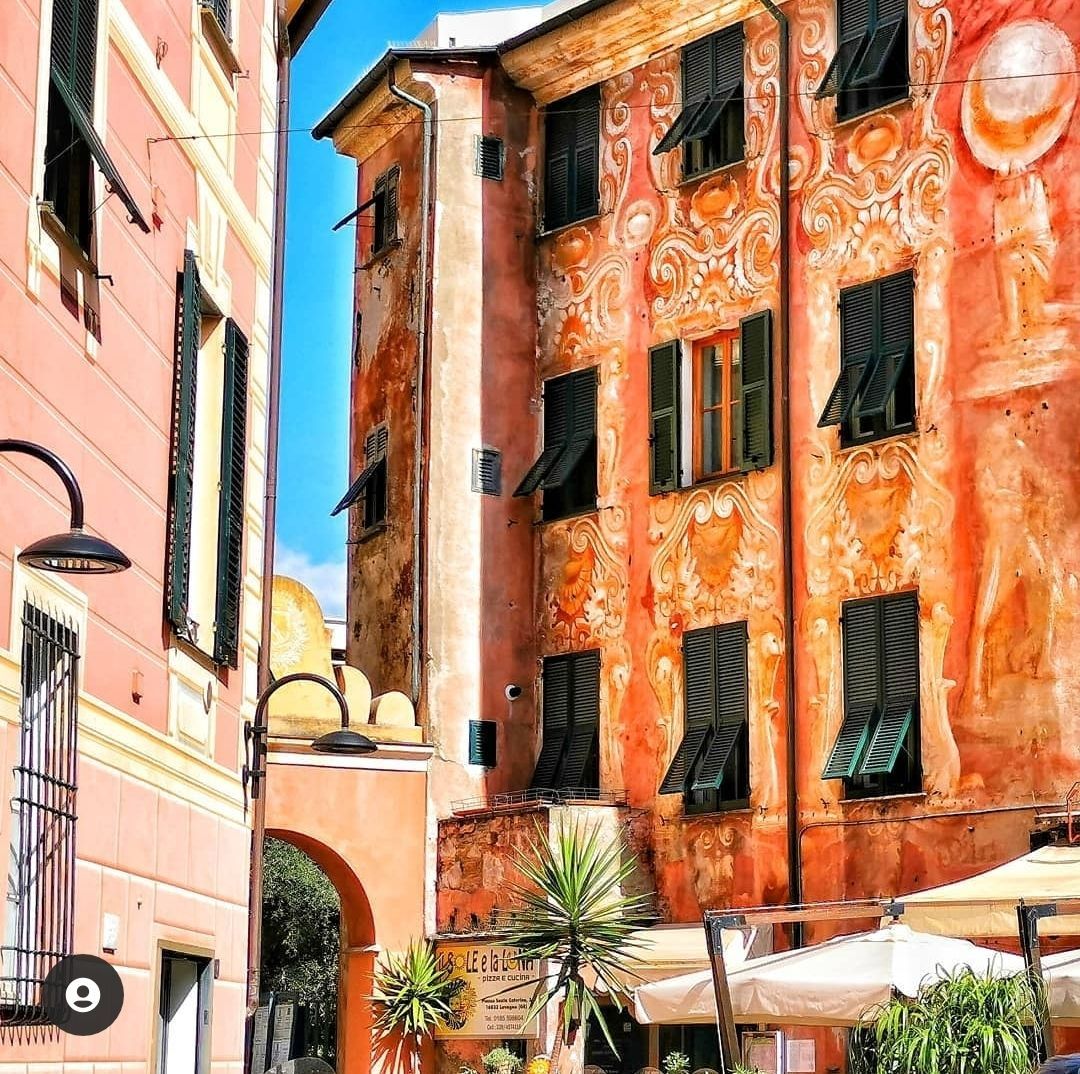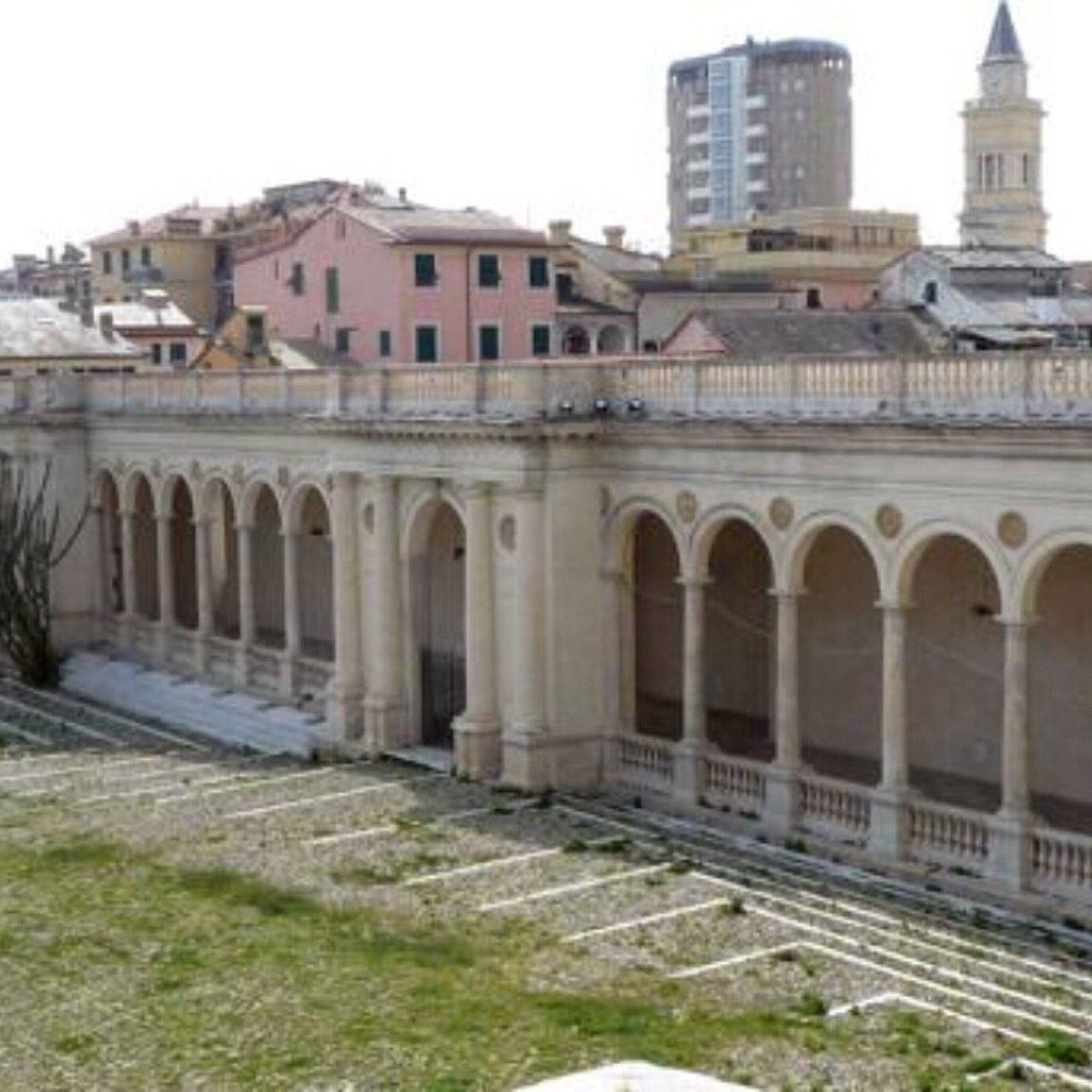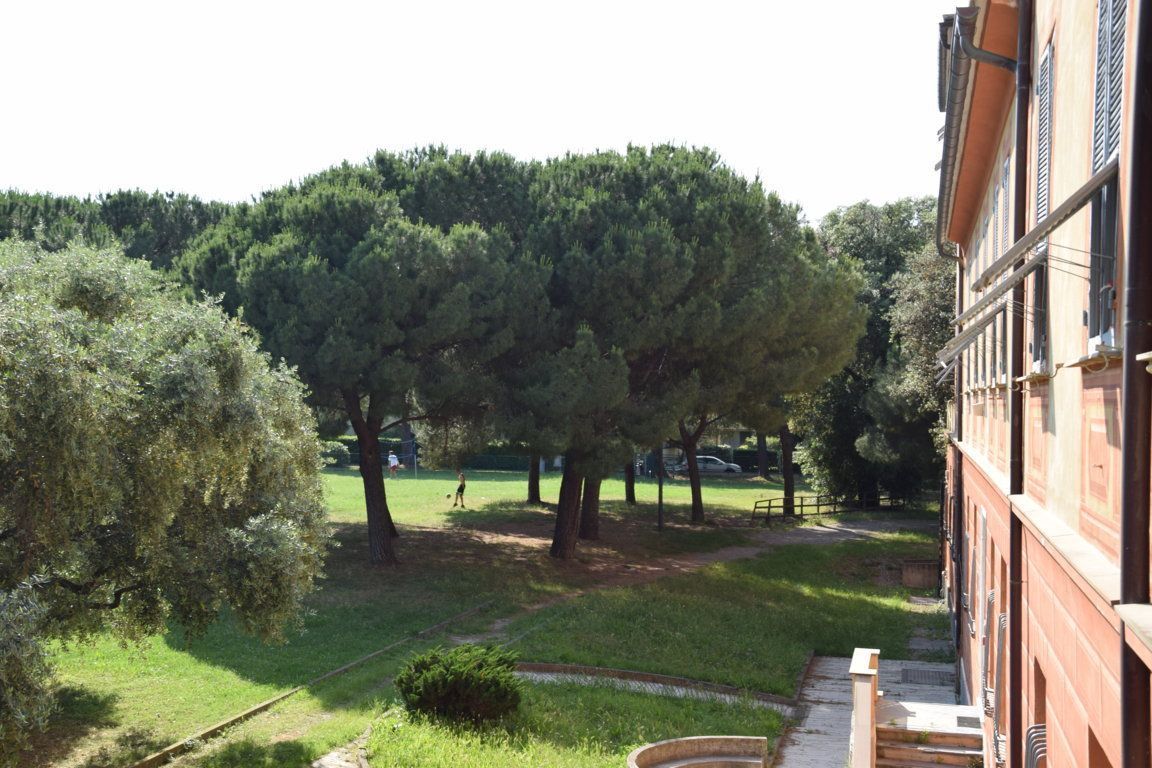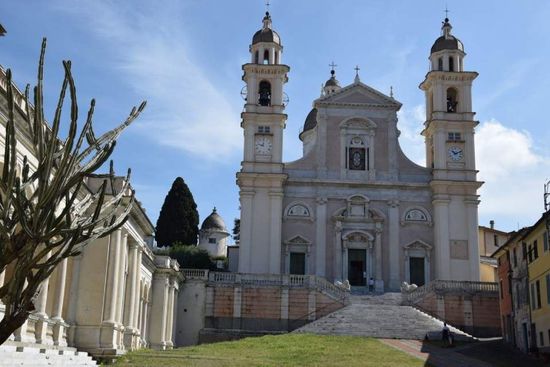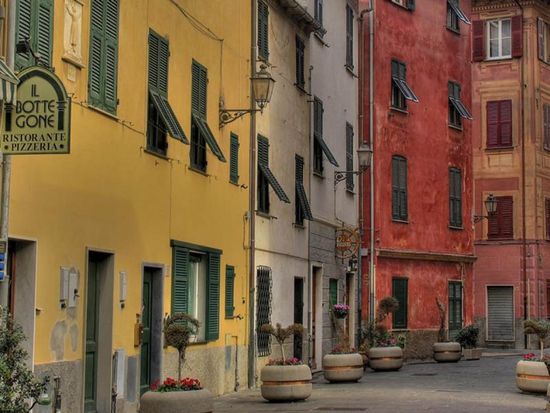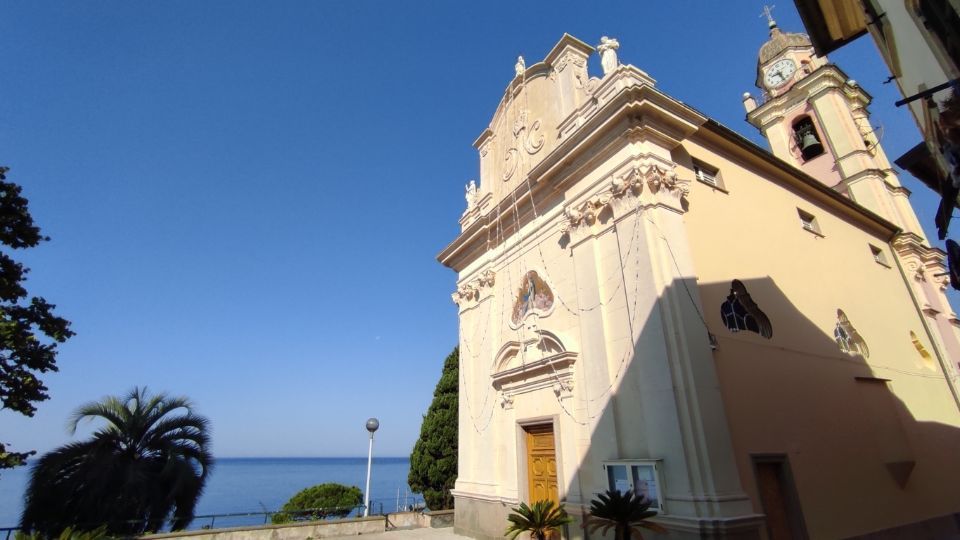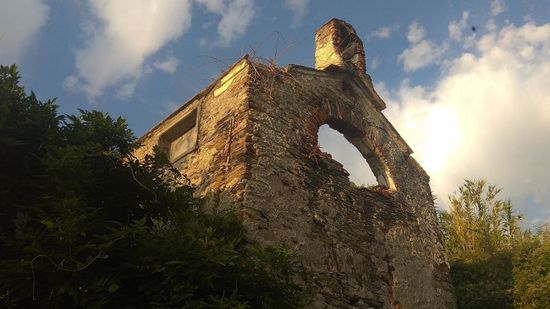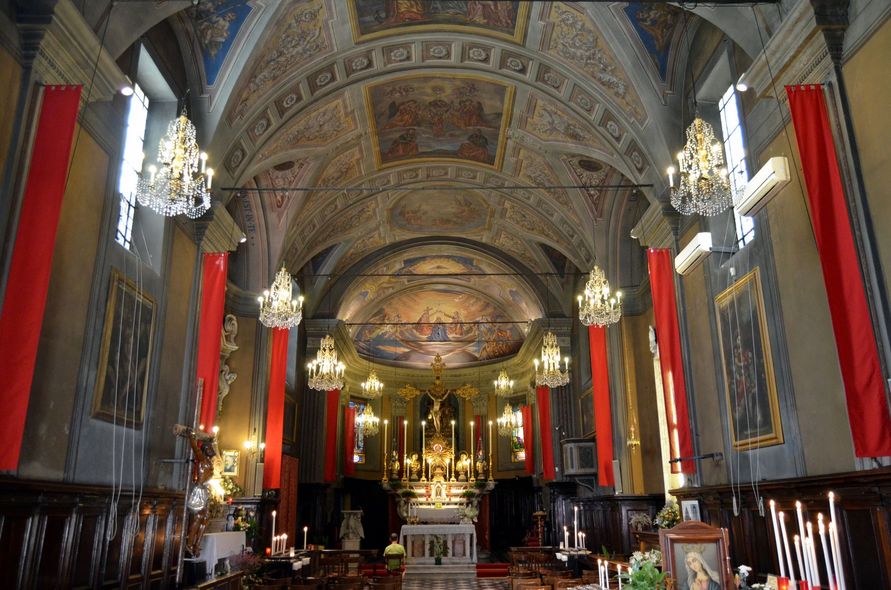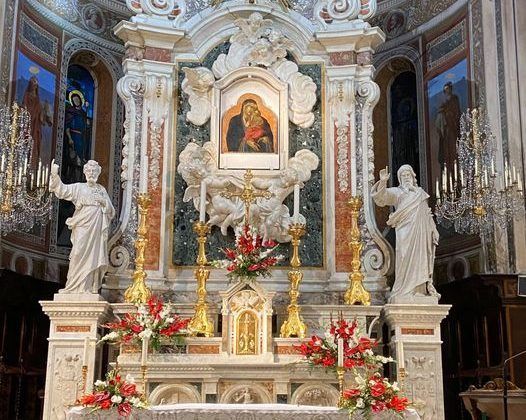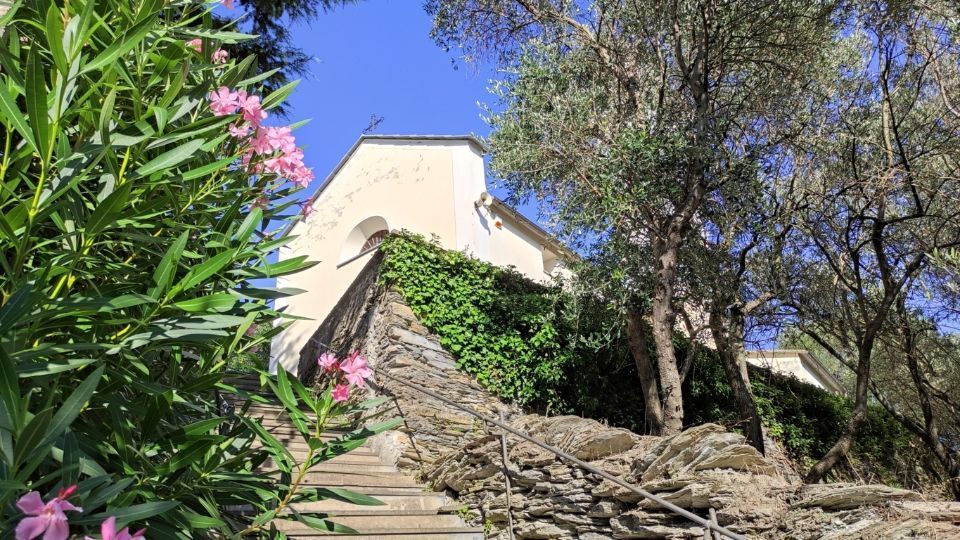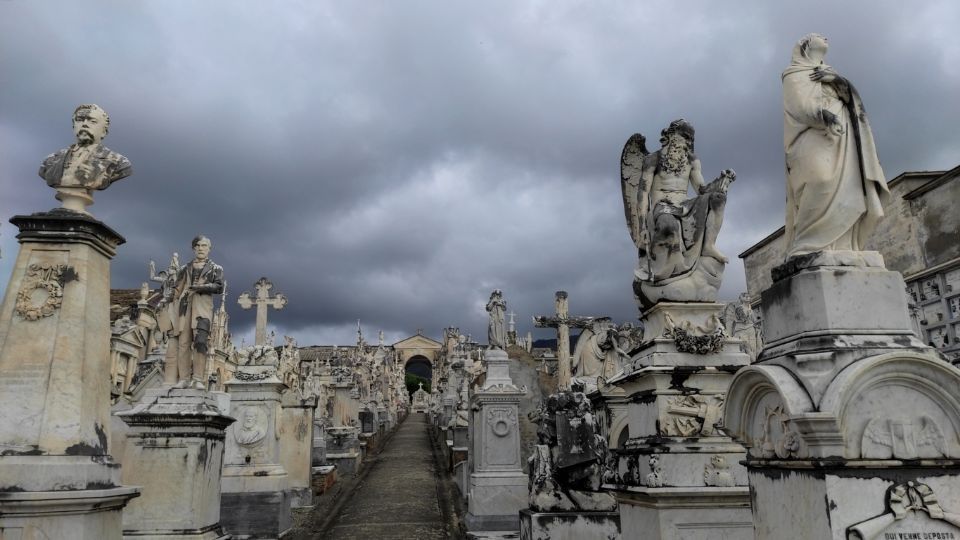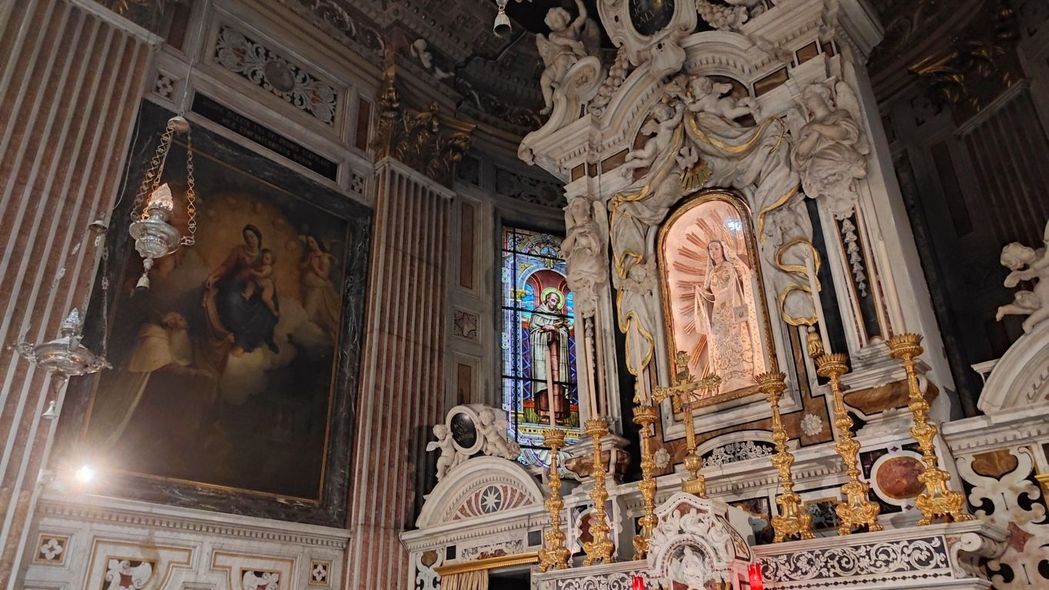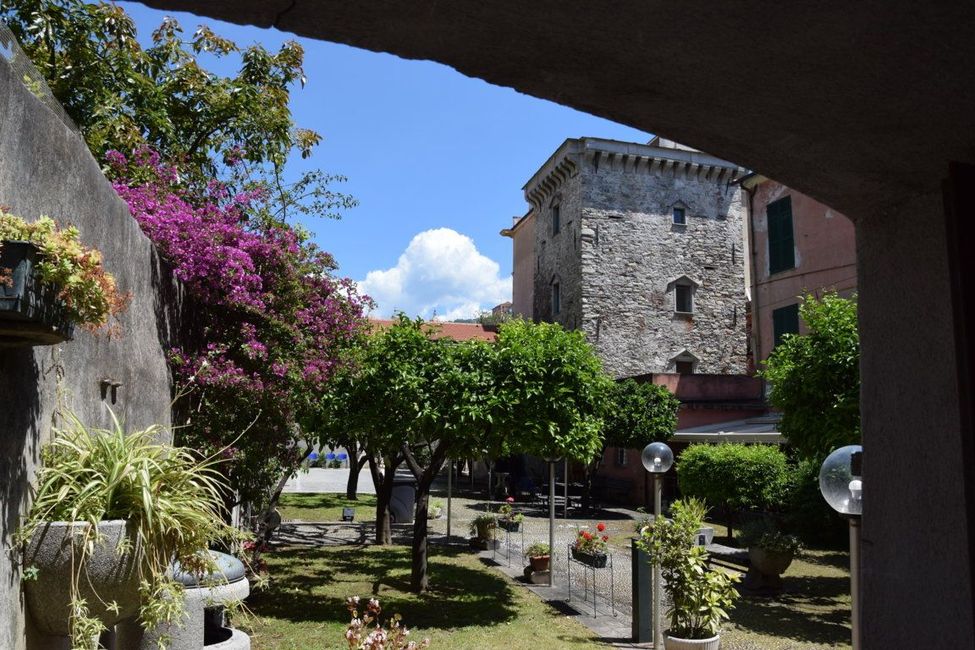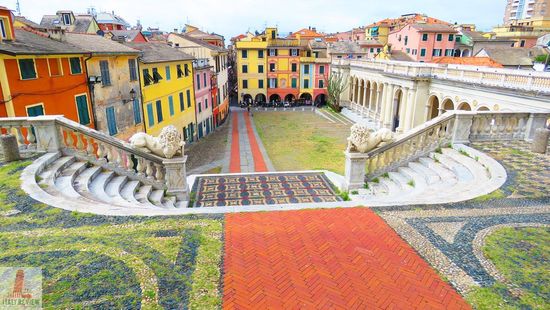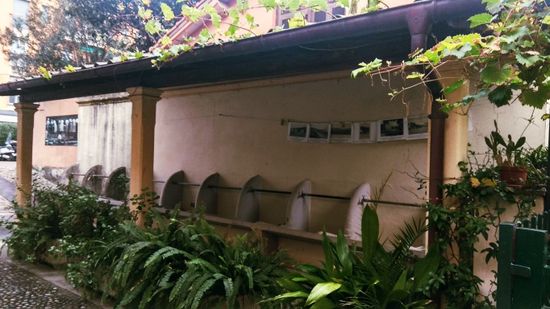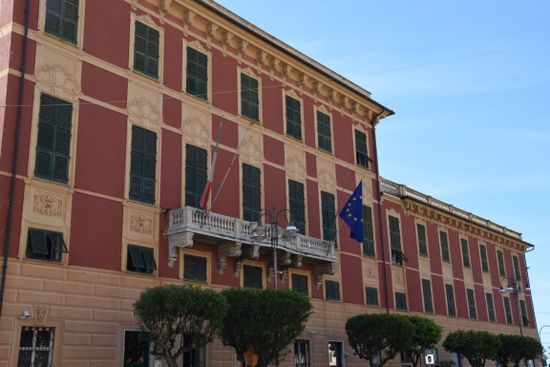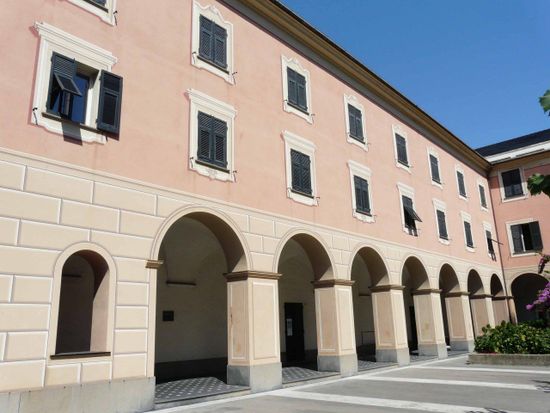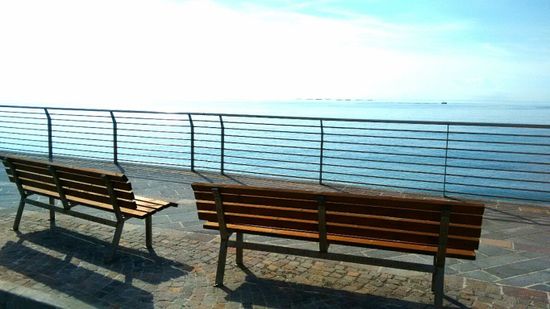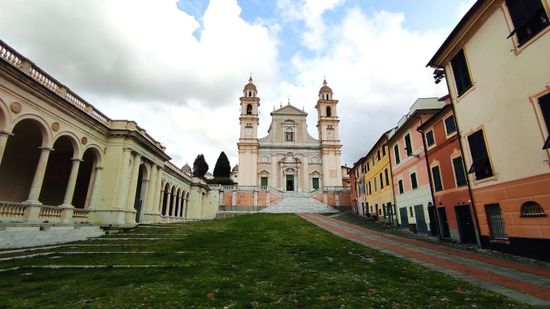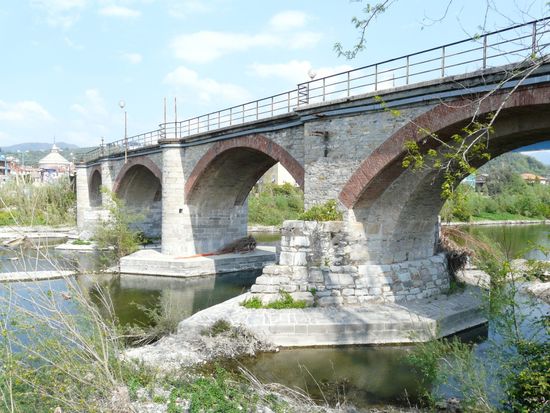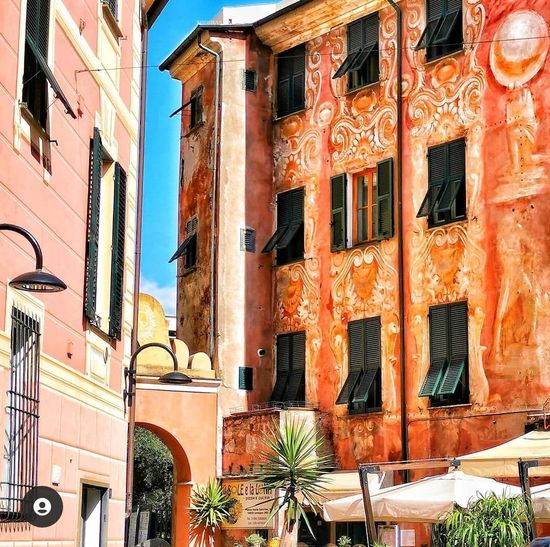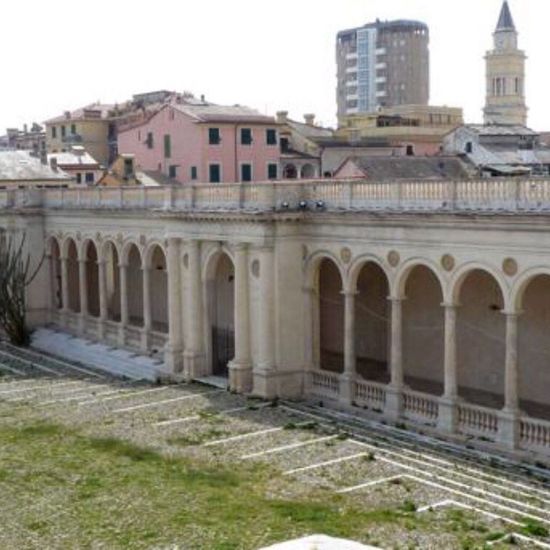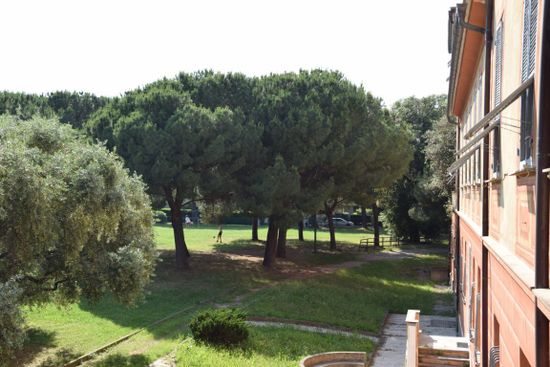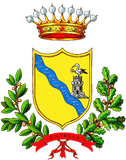What to see in Lavagna
The municipality of Lavagna is rich in natural, cultural and historical attractions. Choose what to visit in Lavagna and discover the marvels waiting for you in the town and surrounding area.
Basilica of Santo Stefano
If you don't know what to visit in Lavagna, start with the Basilica of Santo Stefano, a late Renaissance building with very ancient origins. Sitting on the remains of a fortress from the year 1000, in 1143 it was declared that about thirty churches in the surrounding area would answer to it. In the Baroque era, in 1657, the building was enriched by two bell towers, one facing south and other east, the latter also used as a watchtower, to defend against possible incursions by the Turks or other enemies.
Casa Carbone
A real museum, among the most popular in Lavagna and Liguria. Casa Carbone preserves art, ceramics and fin-de-siècle furnishings, wall paintings, paintings from the Ligurian school of the 17th century and lively terrazzo floors. Typical Ligurian construction of the 19th century, which faithfully and warmly preserves the domestic atmosphere and taste for living of the 19th and 20th centuries.
Cavi
Cavi di Lavagna is today an important seaside resort, characterised by a typically low and sandy coast extending for about two and a half miles, qualifying as one of the longest beaches of the Riviera di Levante. There are two main areas to Cavi: the older, Cavi Borgo, originally a simple fishing village, and the newer, Cavi Arenelle. Private beaches, small shops, bars, pizzerias and restaurants on the sea all increase the charm of this corner of paradise.
Church of the Immacolata Concezione
This Lavagna church has very ancient origins. Already in 1031, a document names various places around Lavagna including "Clapària", now Cavi, where there was a small devotional chapel dedicated to Sant'Erasmo. In 1735, the rector of Centaura wrote to the Archbishop of Genoa informing him of the Chapel of Santi Chiara, Erasmo and Lorenzo in Cavi, 23 hands long. The same building was described as a "small chapel of little importance" in 1769. The inhabitants of Cavi would have liked a larger church, open on holidays, in part because the ascent to Santa Giulia, which they depended on, was uncomfortable.
Church of San Michele Centaura
The ancient chapel of San Michele in the locality of Santa Giulia di Centaura is located at one of the most evocative panoramic points of all Tigullio. Its origins probably date back to the Lombard era. Damaged on 22 May 1564 by Algerian Barbary corsairs during the siege of the city of Lavagna and restored in 1649 by the Genoese patrician Antonio Giustiniani, who entrusted it to the Jesuits, it then passed to the Grimaldi and other families. Today, in a state of abandonment, it nevertheless remains an authentic jewel.
Oratory of the Santissima Trinità
Of very ancient foundation and certainly already existing in 1406, it stands next to the Shrine of the Madonna del Carmine. It is administered by the Confraternity of the Flagellants. In 1844, the high altar, first facing east, was moved to the west; now the main door is on the public road and maintains the ancient 15th-century slate portal which represents the Trinity and the Flagellants in prayer. The interior, with a nave, has a typically Ligurian slate and marble floor; around the walls, there are wooden benches from 1768, which serve as seats for the brothers and the faithful.
Shrine of Nostra Signora del Ponte
The shrine of Lavagna preserves an important piece of historical evidence: a reference to the ancient Fieschi bridge, Ponte della Maddalena, built in 1210 in place of a previous wooden bridge. The Fieschi themselves also had a chapel built at the beginning of the bridge and placed there an image of the Madonna which had a protective function for those crossing the bridge. The chapel was rebuilt and enlarged in 1492 and Lorenzo Fasolo from Pavia at the beginning of the 16th century adorned the facade with a delicate fresco representing the Madonna della Misericordia who, with her mantle, protects men, women and brothers from the wrath of God, who punishes them, with the plague, for their sins.
Church of Santa Maria Assunta Sorlana
In Sorlana in 1031, the Archbishop of Genoa collected rents from the land, as we read in the archbishop's records: "Hoc sunt nomina eorum in isto kalendo campo senaschi, Sorlana, Saponico Badalaxi". This church is of very ancient date. The Lodo of 1387 for the tax assigns it a penny for every 100 lire of tax, and it is also mentioned in the list of churches having the care of souls of 1311, at no. 133. In 1518 it passed to the Diocese of Bugnato together with its parish church Sestri and others. He returned to Genoa on 7 October 1594 in exchange for the transfer of the church of Sant'Apollinare di Reppia exchanged in deed by Domenico Muzio between Archbishop Alessandro Centurione and Bishop Stefano Baliano. The church, graceful in its architectural lines, has a beautiful bell tower with pilasters and capitals; inside it preserves a canvas, a period crucifix and an interesting 18th-century tabernacle.
Monumentale Cemetery
Lavagna's cemetery is an open-air museum. Ornamental tombs, wonderful statues and chapels that are true works of architecture, make it one of the most evocative places in Liguria. Dating back to 1810 and located on a hilly area, it is second in Liguria only to that of Staglieno in Genoa when it comes to works of art. In the first part, the "old cemetery", it follows the line of the hill up the slope, with monumental marble tombs of great beauty, mostly made by the sculptors of the Repetto workshop, some later buried in the cemetery itself.
Many statues depict symbols of faith, of pain, of political affiliations, of the professions practiced, typically in the 19th century.
Church of San Pietro Apostolo
The Church of San Pietro Apostolo is located in the village of Barassi, in the municipality of Lavagna. Originally it was dedicated to Sant'Eufemiano, as attested by a papal bull of Pope Innocent VIII. The year of construction is unknown, but we know that it was built under the patronage of the Olivetan Fathers of Quarto.
The church was initially part of the Diocese of Genoa, then of Brugnato, currently of Chiavari. Inside there are three altars: the main one dedicated to San Petro and the side ones to the Madonna del Rosario and the Santissimo Crocifisso.
Shrine of Nostra Signora del Carmine
This Lavagna church was built between 1617 and 1631 by the Discalced Carmelites from Genoa, who erected the convent before 1619. The events linked to Napoleon in Italy made the religious abandon the convent and moved to Novi and Genoa. Of the two parts that made it up, the convent was dismembered, sold and used for various purposes, especially civilians: post office, court, town hall, primary school. In 1806 the church returned to its functions and, having been declared an autonomous sanctuary, was placed under the jurisdiction of the archpriest of Santo Stefano.
Torre del Borgo Gardens
The 43-foot Torre del Borgo was for centuries the tallest building in Lavagna and certainly one of the most historically important. Restored on the occasion of the jubilee of 2000, today it houses not only cultural events but also a collection of works in slate by the Lavagnino sculptor Francesco Dallorso and the Rodolfo Alloisio archaeological collection, which collects findings from various periods and places, including Tuscan ceramics and Ligurian maiolica. Set in an almost hidden garden which today is one of the unmissable points of the old town, where you can get lost on a sunny day even in the middle of winter, perhaps reading a book away from the noise in an enchanting setting that lets you escape time.
Via XX Settembre
+39 01853671
Colourful old town of Lavagna
The old town of Lavagna is full of alleyways that intersect with squares and courts. It is a riot of classic Ligurian colours, which lend the house-fronts a picturesque quality rich in authenticity and tradition. Stroll around the town staring upwards so you don't miss this spectacle of colours that never ceases to fascinate.
Old wash houses
In Vico dell'Arco, an enchanting alley connecting Via Matteotti to Via Aurelia between delightful partly-hidden private gardens, the old wash houses, used by our great-grandmothers, are still to be seen in all their authentic splendour. The houses even included a wood-burning boiler to heat the water. A jewel of our tradition that merits a little stop.
Vico dell'Arco and Via Matteotti
Alleyways in the old town
The old town of Lavagna is full of alleyways that intersect with squares and courts. It is a riot of classic Ligurian colours, which lend the house-fronts a picturesque quality rich in authenticity and tradition. Stroll around the town staring upwards so you don't miss this spectacle of colours that never ceases to fascinate.
Palazzo Franzoni
Genoa and Lavagna are united by an architecture of great historical importance. This historic building in Lavagna tells the story of a family from Genoa: the Franzoni. In 1696, this ancient noble family, owner of lands in Genoa, Cogorno and Lavagna, had a building with a noble chapel on Piazza della Marina, now Piazza della Libertà, a symbol of the political and economic power of the family.
Palazzo Ravenna
Overlooking the heart of Lavagna is Palazzo Ravenna, dedicated to the local scholar who in 1879 wrote an exhaustive history of the county and municipality of Lavagna. Formerly a convent, built by the Discalced Carmelite friars around 1600, it was, after some modification work on the structure, the original town hall. With the move of the latter in 1931 to the current Palazzo Franzoni on Piazza della Libertà, in more recent times it became the seat of the Giovanni Serbandini Bini Civic Library. There is also a multifunctional hall, the Sala Albino, the Libringioco Ludo-Library and the historical archive.
Piazza Ravenna
Seafront
Anyone who stops in Lavagna for a few days will fall in love with this relaxing walk, especially in the low season when the mild climate allows you to jog, walk, stop for a good read, have lunch with a piece of focaccia on a bench, or for the little ones, have a bike ride. Two railway stations with direct access to the promenade make Lavagna an extremely easy town centre to reach.
Piazza Marconi
Piazza Guglielmo Marconi is the heart of the town. Surrounded by real local jewels like the Brignardello Portico, the stairway of the Basilica of Santo Stefano and the facades of the houses with their typical colours, this space plays host to the most important events and shows, which evoke incredible emotions. The square is the result of a restoration and redevelopment of the town in the 17th century.
Ponte della Maddalena
This bridge, with six arches and 820 feet long, connects Chiavari and Lavagna from the beginning of the 13th century. Probably as early as the 12th century there was a wooden bridge, known as the bridge of the sea, dedicated to Sant'Erasmo, patron saint of sailors. But the current structure was commissioned by Ugone Fieschi, father of the future Pope Innocent IV, to ensure adequate communication between Lavagna and Chiavari and with the hinterland. The precise date of construction is not known, but from notarial documents it appears to have been erected between 1210 and 1212.
Porta Ponente
This was the gate that led out of Lavagna towards the village of Madonna del Ponte and is the only one left of the two that once existed. It opens onto a small square, once known as Piazza delle Erbe because the farmers brought vegetables and milk here to sell. During epidemics, it was manned by guards to check passers-by.
Porticato Brignardello
A work commissioned for Lavagna by the wealthy Nicola Brignardello, who left a quarter of his assets, made in Chile, to build a portico with an overhanging terrace for public use. Legend has it this well-known son of Lavagna wanted to create a passage that would allow him to reach the cemetery without having to pass in front of the Basilica of Santo Stefano and so he had this portico erected. The works were carried out between 1894 and 1898.
The portico has one entrance to the south and two to the east. The arcade space is currently used for cultural events such as concerts, performances, exhibitions and food and wine events.
Villa Spinola Grimaldi
Lavagna preserves many buildings of great value, which in Liguria tell the stories of ancient and noble families. One of these buildings is Villa Spinola-Grimaldi, built in 1604 by the Spinola family, later passed to the Grimaldi and then to the Pallavicini. Starting in 1820 the villa was renovated and transformed into a country house.



